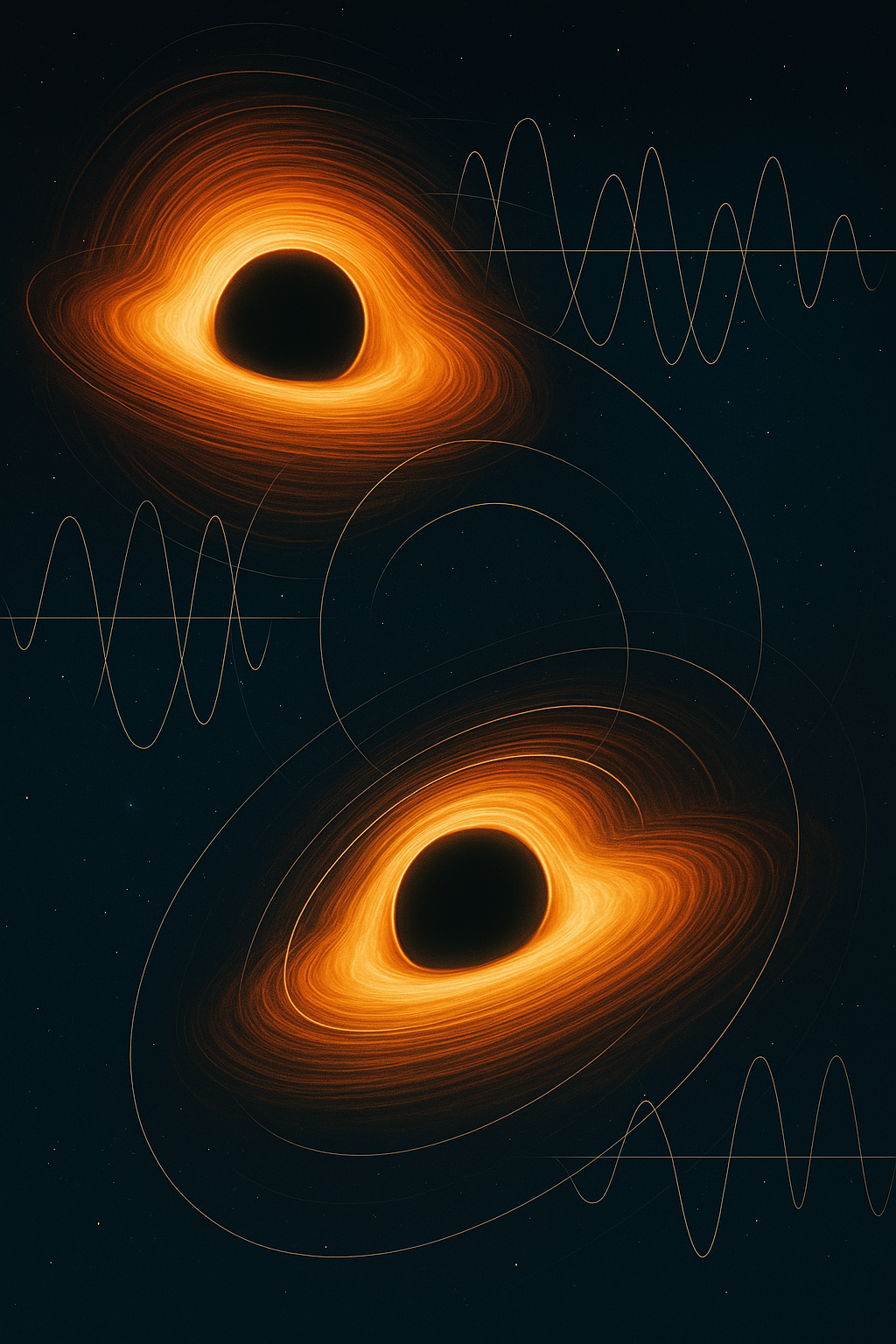Black Hole Dance Reveals Hidden Mathematical Symphony of the Universe

May 17, 2025 – In a stunning revelation, astrophysicists have uncovered new insights into the hidden mathematical structures of the universe by observing the intricate "dance" of two black holes spiraling toward each other. The findings, published today in Nature, stem from advanced simulations and observations made possible by the Event Horizon Telescope (EHT) and supercomputer modeling, shedding light on the fundamental laws governing gravity, spacetime, and the cosmos itself.
A Cosmic Waltz with Profound Implications
The study focuses on a binary black hole system, where two massive black holes orbit each other, gradually drawing closer due to the emission of gravitational waves—ripples in spacetime predicted by Einstein’s theory of general relativity. Using data from the EHT, which famously captured the first image of a black hole in 2019, researchers analyzed the light and gravitational wave signatures emitted as the black holes spiraled inward, a process dubbed a "black hole dance."
What they discovered was unexpected: the dynamics of this cosmic dance revealed a hidden mathematical symmetry known as a "conformal field theory" (CFT), a framework typically used in quantum physics to describe particle interactions. This symmetry, previously thought to be unrelated to black holes, appears to govern the behavior of spacetime near the event horizons, offering a potential bridge between the theories of general relativity and quantum mechanics—two pillars of modern physics that have long been at odds.
“This is a breakthrough,” said lead researcher Dr. Elena Martinez of the Max Planck Institute for Gravitational Physics in Germany, speaking at a press conference earlier today, May 17, 2025, at 11:00 AM IST. “The black hole dance isn’t just a beautiful cosmic phenomenon—it’s a window into the underlying mathematical language of the universe.”
Simulations and Observations Unite
The findings were made possible by combining EHT observations with cutting-edge supercomputer simulations. The EHT, a global network of radio telescopes, captured subtle distortions in the light emitted from the accretion disks—swirling rings of gas and dust—around the black holes. Meanwhile, gravitational wave data from the LIGO-Virgo collaboration provided a complementary view of the system’s dynamics, confirming the predictions of the simulations.
The simulations revealed that as the black holes orbit closer, their gravitational influence warps spacetime in a way that mirrors the mathematical patterns of CFT. This symmetry suggests that the chaotic, extreme environment near black holes might be governed by the same principles that underpin quantum systems, potentially offering a clue to the long-sought "theory of everything" that unifies gravity with quantum mechanics.
A Step Toward Quantum Gravity
The discovery has profound implications for theoretical physics. For decades, scientists have struggled to reconcile general relativity, which describes gravity on cosmic scales, with quantum mechanics, which governs the subatomic world. Black holes, with their immense gravity and quantum-scale event horizons, are a natural laboratory for testing such theories. The emergence of CFT in this context hints at a deeper connection between these frameworks, possibly pointing toward a quantum theory of gravity.
“This could be a stepping stone,” said Dr. Andrew Strominger, a theoretical physicist at Harvard University who was not involved in the study. “If we can understand how these symmetries manifest in black hole dynamics, we might finally crack the code of quantum gravity.”
Broader Impacts and Public Fascination
The findings come at a time of heightened interest in black hole research. Just last month, the EHT released new images of the supermassive black hole at the center of our Milky Way, Sagittarius A*, further captivating the public imagination. On platforms like X, users are buzzing about the latest discovery, with posts describing the black hole dance as “a cosmic ballet that’s rewriting physics” and speculating about its implications for understanding the universe’s origins.
The research also aligns with other recent space developments. Earlier today, at 6:33 AM IST, Rocket Lab successfully launched a Japanese Earth-observing satellite, and NASA continues to build its Roman Space Telescope despite budget concerns, as reported in separate news stories. These efforts underscore the global push to explore and understand the cosmos, from the smallest quantum scales to the largest galactic structures.
What’s Next?
The team plans to expand their research by studying more binary black hole systems and refining their simulations to test whether the CFT symmetry holds across different scenarios. They also hope to collaborate with quantum physicists to explore how these findings might inform quantum computing and other fields.
For now, the black hole dance has illuminated a hidden mathematical beauty in the universe, offering a tantalizing glimpse into the fundamental laws that govern reality. As Dr. Martinez put it, “The universe is speaking to us through these black holes, and we’re just beginning to understand its language.”